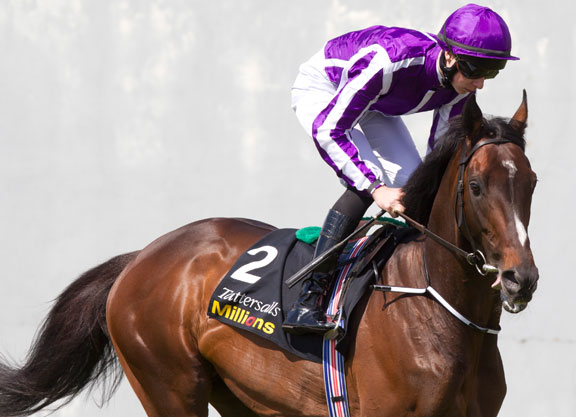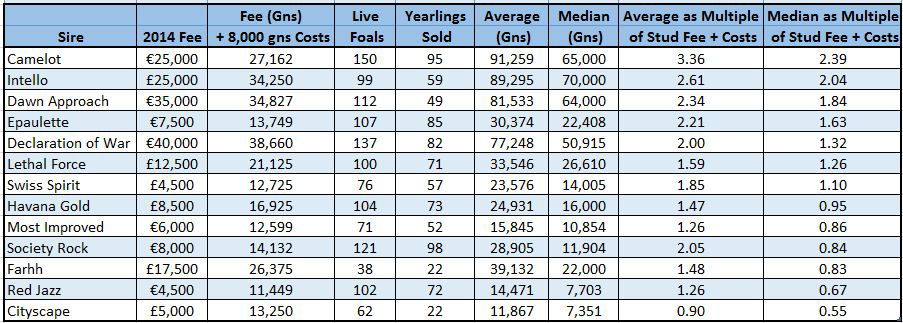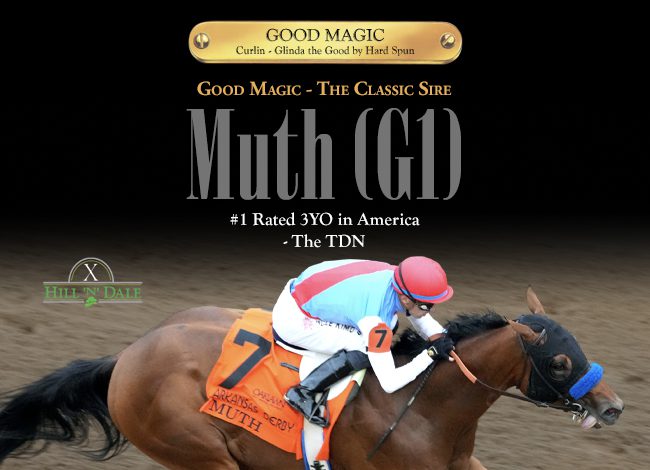By Kevin Blake
The bloodstock business is truly extraordinary. Despite how few new sires ultimately become commercial successes, it is remarkable to witness the untethered enthusiasm, excitement and speculation which greets each batch of new and unproven stallions that retires to the breeding shed every year. Despite the relatively unattractive odds involved, the majority of players in the game dream of being on the right side of the next successful sire and are willing to back their judgment and support these unproven sires in the hope of striking gold.
Thus, with the first runners of the latest bunch of new sires only a few months away from the racecourse, now is as good a time as any to search for statistical hints as to what might prove to be the pick of the new sires based in Great Britain and Ireland.
It is a competitive year for sires with their first runners in 2016. There are 10 stallions based in Great Britain and Ireland that have 75 or more 2-year-olds to represent them. For the sake of comparison, there were 13 such stallions in 2016 and eight in 2015.
Also worth noting is that there is more depth in the upper end of the market than is often the case, with five individual stallions having covered their first crop at a published fee of £17,500 or higher.
The method used to assess the prospects of the first runners of various stallions is an interesting subject. As always in the bloodstock world, there will be no shortage of subjective opinion based on what observers have seen with their own eyes on the gallops and at the sales, but this piece will seek to make a statistics-based assessment.
While statistics based on yearling sales results are far from cast iron given the potential for some of the results to not be quite as they seem, there is always plenty of interesting information to be extracted from the results.
The chosen method of assessment here is to express the average and more significantly the median price achieved by a sire's progeny at the yearling sales in relation to their sire's nomination fee. This can give an idea of how they performed in the context of the expectation implied by their nomination fee. However, that methodology undoubtedly favours sires with lower nomination fees, so it is fairer to all to include a set figure to account for costs up to the point of sale as a yearling.
As has been discussed in previous sales analysis pieces, what this figure should be is a subject of great debate given the differing circumstances of the horses that sell at yearling sales. Based on feedback from industry figures since last year, the number I have decided to use to best reflect an industry-wide average is 8,000gns.
It is also worth noting that when I converted the 2014 nomination fees of Irish-based stallions from Euro to Guineas for ease of comparison, I used the average exchange rate from Mar. 1, 2015 (€1.38 to £1) to best reflect the cost to the breeder at the average time of transaction. With Sterling having weakened significantly against the Euro prior to the yearling sales in 2016 (€1.15 to £1 on Oct. 1, 2016), British-based stallions on this list are disadvantaged by their stud fee being approximately 17% or so higher than it would be at October 2016 exchange rate.
With all that in mind, statistical analysis of this nature will never be fully reflective of the situation, but it can certainly help to cut through the bluster and give a good indication of how the market really received the first yearlings of these new sires.
So, what do the numbers say?
* €1.38 to £1 March 1st 2015 & Conversion rate of 73p to €1 used.
Based on this analysis, the headline horse is without question Camelot (GB) (Montjeu {Ire}) (Coolmore). The son of Montjeu (Ire) was always going to be a headliner in terms of expectations as a sire. Having won the G1 2000 Guineas and the Derby, he came within 3/4 of a length of becoming the first Triple Crown winner since Nijinsky in 1970 when just touched off in a memorable renewal of the St Leger. While he will be best remembered for his Triple Crown bid, what made Camelot just as remarkable was the speed he showed in the context of his sire's progeny.
Montjeu was an exceptional sire, producing 31 individual Group 1 winners and almost 200 horses rated 100 or higher. A strong trend that emerged amongst his progeny was that stamina was very much their forte. This is what made Camelot so notable, as he was the only one of Montjeu's progeny to ever win a Group 1 at a mile or shorter as a 3-year-old or older. The significance of this is put into further context by the fact that only one other offspring of Montjeu ever won a Group race of any description over a mile or shorter as a 3-year-old or older, namely the subsequent Irish Oaks winner Bracelet when winning a Group 3 over seven furlongs. This feat sets Camelot apart from other sire sons of Montjeu and makes him a highly intriguing stallion prospect.
While it was difficult to draw solid conclusions from the relatively small number of Camelot's progeny that were sold as foals, there can be no doubt as to how they were received in the yearling market. Of all the first-season sires, his progeny registered both the highest average and median sale prices expressed as a multiple of stud fee plus costs. These numbers are made even more robust by the fact that Camelot had the second-highest number of yearlings sold on this list (95).
In terms of who bought them and where they will be trained, as always, the most important question with a high-profile Coolmore sire is how many will be trained by Aidan O'Brien in Ballydoyle. As of now, there are eight Camelots in Ballydoyle, six colts and two fillies. It is also worth noting that there are no fewer than 29 sons of Camelot entered in the 2018 Derby including colts trained by the likes of John Gosden, Sir Michael Stoute and Roger Charlton.
Typically, studs will offer discounts to breeders willing to use a stallion in his fourth season given that this is a fundamentally high-risk time in which to use any sire given how many of them fail. However, very occasionally a stud will bravely increase such a sire's fee in his fourth year to reflect the confidence they have in that sire. A recent example of such rare bullishness was Coolmore's decision to raise Zoffany's nomination fee from €7,500 to €12,500 prior to his first runners hitting the track in 2015. That decision raised many eyebrows at the time, but proved be to be justified by the outstanding performance of his first runners and subsequent rise to a fee of €45,000 for 2016. Thus, it is very eye-catching that Coolmore have raised Camelot's fee from €25,000 to €35,000 for 2017. They clearly have great faith in him.
Given that Montjeu's most notable sire sons have tended to have the vast majority of their 2-year-old winners from August onwards, it is worth bearing in mind that few if any of Camelot's progeny are likely to be seen in the first half of the season. That said, given that Camelot was the fastest of Montjeu's Group 1-winning sons and made his own winning debut in July of his 2-year-old season, it will be interesting to see if his progeny can somewhat buck the trend of their grandsire's descendants as Camelot himself did on the racecourse. Based on how well Camelot's progeny were received at the yearling sales, they will be worth waiting for whenever they appear.
There was another stand-out performer at the yearling sales amongst those at the lower end of the nomination fee scale and it was Epaulette (Aus) (Commands {Aus}) (Darley). Darley have unquestionably been the most enthusiastic European-based supporters of Australian-trained sprinters following on from the success they enjoyed with the similarly-profiled Exceed and Excel (Aus). While Epaulette is by a sire in Commands that wouldn't be nearly as familiar to European-based breeders as the sires of most other Darley imports from Australia, this clearly hasn't been seen as a drawback by the British and Irish markets which have supported his progeny with such enthusiasm.
Epaulette's first foals came out at the top of this column's analysis of the performance of the new sires at the foal sales in 2015 and his half-brother Helmet did very well with his first runners as a sire in 2016, so it wasn't a great surprise that his first yearlings were as well received by the market as they were.
Indeed, having finished on top in what was a rather bunched finish among the new sires in the analysis of the 2015 foal sales, he opened a significant gap between himself and his rivals with stud fees of £12,500 or less in the equivalent analysis of the 2016 yearling sales.
In contrast with Camelot, Epaulette's progeny are likely to be much more precocious propositions. His three-parts brother Helmet was the fastest starter of all the first-season sires last year and it would be no surprise if his sibling's progeny were to make the early headlines this year.
Not a subscriber? Click here to sign up for the daily PDF or alerts.







